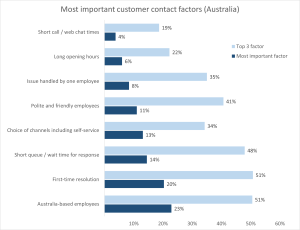CBA orders staff back to the office and looks to the future of its contact centre business using AI – all in the same week. Commonwealth Bank chief Matt Comyn joins a growing push to call workers back to the office, stating that his staff must be on-site at least 50 percent of the time. At a time when remote work has become the norm, this decision raises questions about the future of workplace dynamics. However, amidst this shift, Comyn remains optimistic about the potential of generative AI, specifically highlighting the arrival of ChatGPT as a transformative force that could drive productivity in CBA’s contact centres.
The Rise of Generative AI:
The race to create super intelligent computers has fueled both excitement and concerns about the future of humanity. However, Matt Comyn, the CEO of Commonwealth Bank, sees generative AI as a game-changer. He describes the recent emergence of generative AI, exemplified by the skyrocketing popularity of ChatGPT, as a transformational development in the tech industry.
ChatGPT’s Phenomenal Growth:
ChatGPT, powered by generative AI, has become the fastest-growing app in internet history. This remarkable growth showcases the potential and widespread appeal of AI-powered conversational agents. Comyn believes that this technology has the power to revolutionise productivity and enhance customer experiences in various sectors, including banking.
Transforming Productivity in the Economy:
While concerns about job displacement persist, Comyn sees generative AI as a driver of productivity rather than a threat to employment. He envisions AI systems like ChatGPT as tools that can augment human capabilities, automating repetitive tasks and freeing up employees to focus on more complex and creative endeavors. By embracing this technology, Commonwealth Bank aims to enhance efficiency, improve customer interactions, and ultimately drive economic growth.
Balancing Human Interaction and Technological Advancements:
The decision to bring staff back to the office may seem contradictory in the face of AI advancements. However, Comyn emphasises the importance of human interaction and collaboration. He believes that a hybrid approach, with employees spending time both in the office and working remotely, strikes the right balance between leveraging technology and nurturing interpersonal connections.
Looking Ahead:
As Commonwealth Bank embraces generative AI and the potential it holds, it joins a growing wave of organizations leveraging AI technologies to enhance productivity. The challenge lies in ensuring that employees are equipped with the necessary skills to adapt to these changes and take advantage of the opportunities AI presents.
Matt Comyn’s endorsement of generative AI and its impact on productivity signals a promising future for AI technologies in the banking sector and beyond. While the decision to bring staff back to the office may initially raise questions, Commonwealth Bank’s ‘all-in’ approach showcases the company’s commitment to harnessing the potential of AI while recognising the value of human interaction. As AI continues to shape the future of work, organisations must strike a delicate balance between technology and the human touch to maximise productivity and foster innovation in the evolving workplace.










